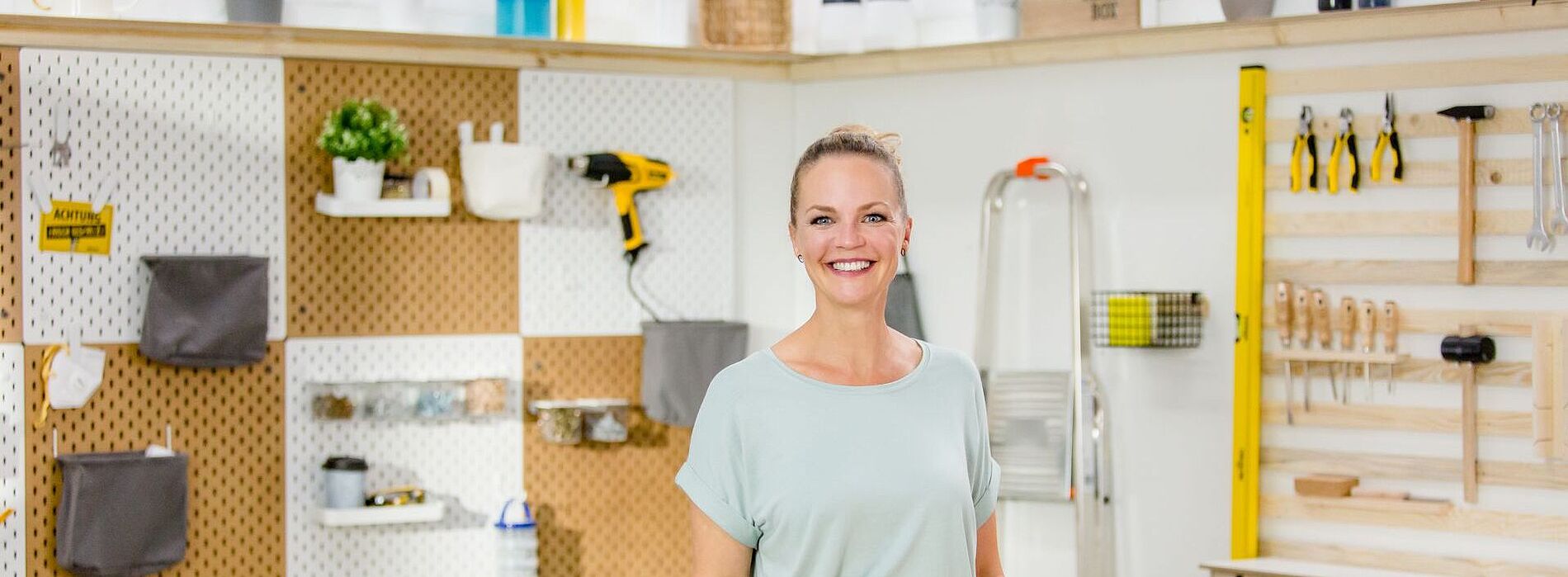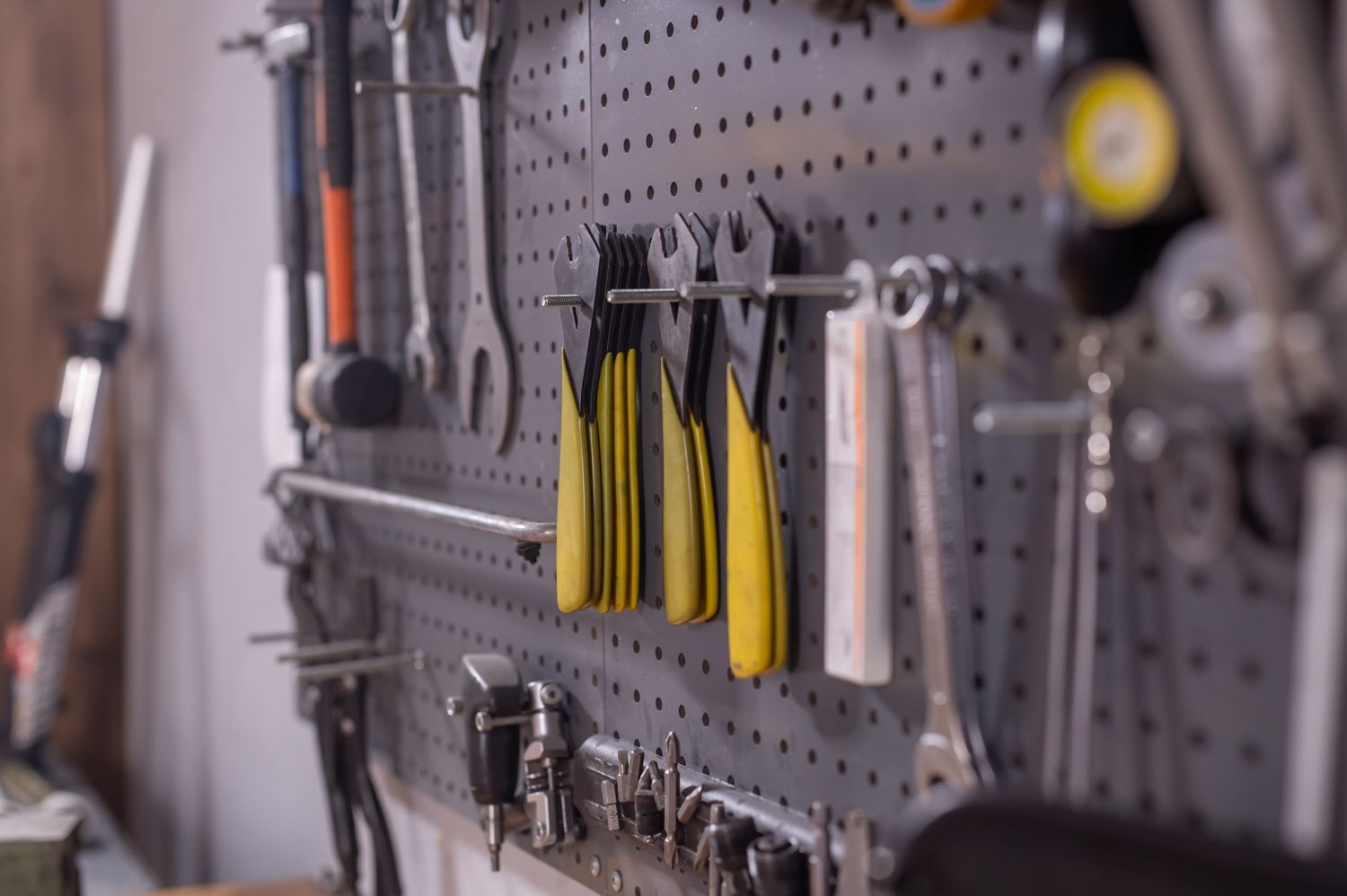Establish a sensible organisation system for the workshop
Order is half the battle! Or even half the workshop. If you constantly have to look for tools, machines or screws, you will have less and less desire to work in your own workshop. That is why it pays to keep the workshop tidy right from the start, with a little effort and good workshop furnishing ideas. Brenner's Tip: "Establish a storage system and then actually implement it."
The first and easiest workshop hack is to label all cupboards, drawers and boxes. Before sorting the first tool, think about where which utensil should find its place and write it down. This way, you not only find your tools but vistors to the workshop can also. Frequently used tools such as hammers, folding rulers, pliers and the like are best kept near the workbench. So you have everything important right at hand! Don't forget: Replace the labelled signs if they are no longer correct.
Eva Brenner also recommends: "A large, sturdy perforated wall should not be missing from any tidy hobby workshop!" It is the perfect tool storage for the wall behind the workbench. With the help of long nails and hooks, smaller tools such as pliers, screwdrivers, spatulas, hammers or spanners can be hung up and are clearly visible.
According to Brenner, the right organisational system for small and very small workshop accessories is slotted panels with viewing boxes. Screws, nails, nuts or even small accessories for your paint sprayer can be sorted and found. Keeping your DIY workshop tidy is easy with these tips.
Order is half the battle! Or even half the workshop. If you constantly have to look for tools, machines or screws, you will have less and less desire to work in your own workshop. That is why it pays to keep the workshop tidy right from the start, with a little effort and good workshop furnishing ideas. Brenner's Tip: "Establish a storage system and then actually implement it."
The first and easiest workshop hack is to label all cupboards, drawers and boxes. Before sorting the first tool, think about where which utensil should find its place and write it down. This way, you not only find your tools but vistors to the workshop can also. Frequently used tools such as hammers, folding rulers, pliers and the like are best kept near the workbench. So you have everything important right at hand! Don't forget: Replace the labelled signs if they are no longer correct.
Eva Brenner also recommends: "A large, sturdy perforated wall should not be missing from any tidy hobby workshop!" It is the perfect tool storage for the wall behind the workbench. With the help of long nails and hooks, smaller tools such as pliers, screwdrivers, spatulas, hammers or spanners can be hung up and are clearly visible.
According to Brenner, the right organisational system for small and very small workshop accessories is slotted panels with viewing boxes. Screws, nails, nuts or even small accessories for your paint sprayer can be sorted and found. Keeping your DIY workshop tidy is easy with these tips.










